Welcome to the ultimate and most comprehensive guide on natural hair growth and hair regrowth! Our mission is to equip you with all the necessary information to make your hair grow faster, making this article the most vital resource available online for anyone seeking to grow hair long, luxurious.
Within these pages, we have meticulously compiled a wealth of knowledge on the topic, covering every aspect of promoting hair growth. If your goal is to achieve those lusciously long locks, you’ve come to the right place – this article is an absolute must-read.
Not only will we delve into effective techniques to stimulate hair growth, but we will also shed light on specific reasons that may be hindering your hair growth progress. Prepare to embark on a journey of understanding your hair better, discovering the secrets to faster growth, and unraveling the obstacles that might be standing in your way. Let’s unlock the potential of your beautiful hair with Nice Hair Viet Nam!
Overview of Natural Hair Growth
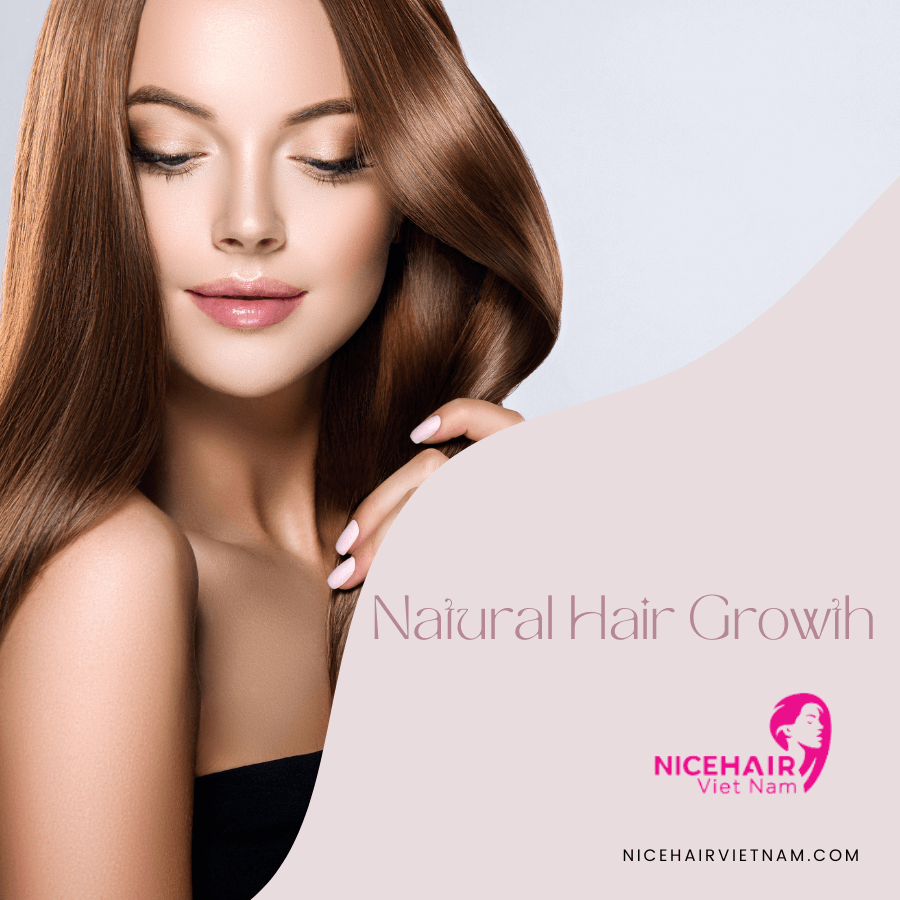
In our fast-paced, modern world, the desire for swift results permeates every aspect of our lives, and our hair growth is no exception. We belong to the “microwave generation”, a cohort accustomed to immediate gratification in almost every aspect of our daily routines.
Take communication, for instance. Traditional letter writing has taken a backseat as email allows us to convey messages instantly, eliminating the need for patience in waiting for a reply. Even our quest for knowledge has evolved drastically; a trip to the local library has been replaced by a few simple clicks on search engines like Google and Bing, delivering information promptly to our screens.
The entertainment industry has undergone a radical transformation as well. Movie retailers such as Blockbuster have had to adapt their business models or face extinction, bowing to the preference for on-demand movie streaming services like Netflix, providing immediate access to a vast array of films and shows.
The microwave generation embodies impatience, and it’s not uncommon to witness someone standing in front of a microwave, impatiently urging their Lean Cuisine to cook faster.
This inherent impatience is particularly evident among women who love experimenting with their hairstyles or those discontent with their current short haircuts. They yearn for their hair to grow faster, enabling them to achieve the desired look they envision.
Now, as we move past the introduction and delve into the heart of the matter, let’s explore the essential factors you need to grasp to accelerate your hair growth effectively. Embracing these insights will empower you to embark on a journey towards healthier, longer locks, satisfying the wishes of the microwave generation while embracing the beauty of natural hair growth. So, without further ado, let’s unveil the secrets to accomplishing your dream of faster hair growth!
The Hair Growth Process
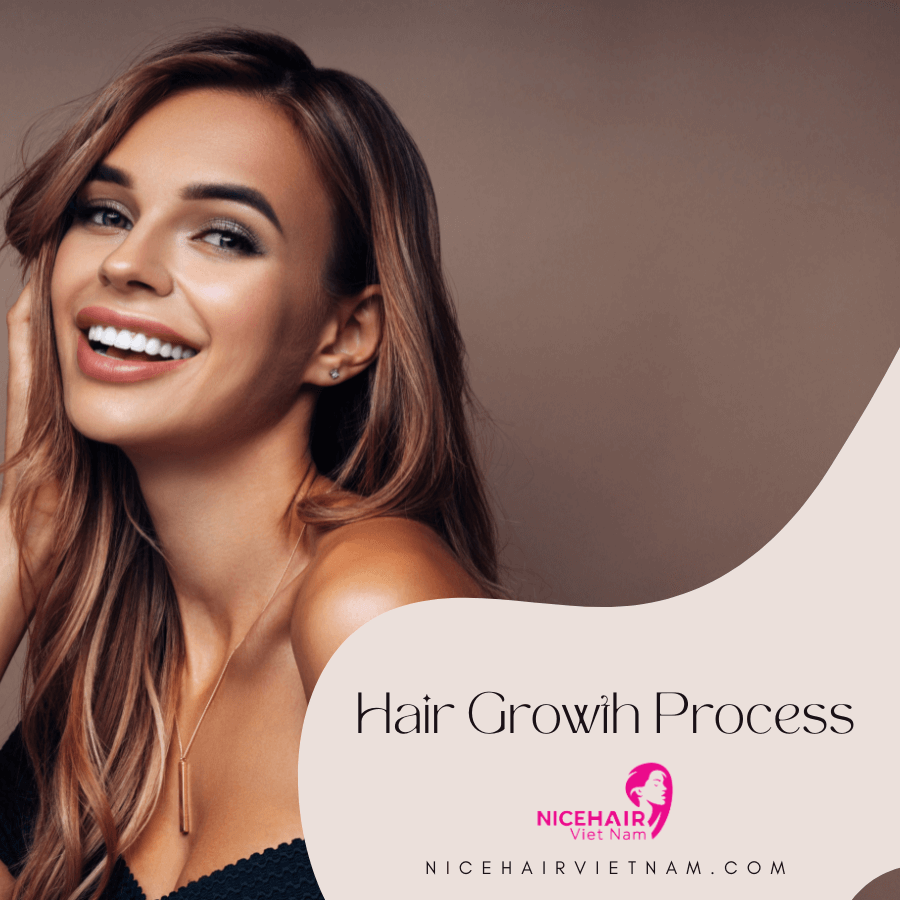
Hair growth is undeniably influenced by various factors, and while numerous elements contribute to the rate at which hair grows, time stands out as the most crucial determinant.
Letting your hair grow naturally and unhindered remains unparalleled. While there are practices that can encourage and optimize the growing process, ultimately, the passage of time plays an irreplaceable role.
It’s important to recognize that hair growth is a gradual process, and to achieve vibrant and healthy-looking hair, this process must be allowed to unfold in its entirety, necessitating sufficient time.
On average, a person’s hair grows approximately half an inch per month, adding up to roughly six inches of growth over a year. However, it is worth noting that certain ethnic groups may exhibit hair growth rates that surpass or fall below this mean. In today’s multicultural world, with diverse genetic backgrounds and the blending of different ethnicities, attempting to define strict norms related to hair growth based on various ethnic groups can be challenging and, in many cases, inconclusive.
Acknowledging the intricacies of hair growth across different ethnicities, it becomes evident that embracing individual differences and unique hair characteristics is the most inclusive and respectful approach. Let us focus on fostering healthy hair growth practices that apply universally and celebrate the beauty of diversity in hair textures and growth patterns. By doing so, we can promote an inclusive understanding of hair care while appreciating the natural wonders of hair growth in all its forms.
Truly, these variations in hair growth rates are not drastic and can sometimes be entirely influenced by genetic factors. Naturally, some individuals experience faster hair growth, while others observe a slower pace of growth.
The encouraging news is that, regardless of your inherent hair growth rate, your hair is continuously in a state of growth on a 24-hour basis, following a distinct pattern. During the process of growing out your natural hair, you may typically notice an increase in hair thickness before witnessing a significant gain in length.
It’s essential to resist the urge to compare your personal hair growth characteristics with others, as what may be considered normal for one person might not align with your unique hair growth pattern.
Moreover, it’s worth mentioning that you may not always be the best judge of how rapidly and effectively your hair is growing, primarily due to your familiarity with it. Constantly scrutinizing your hair daily can make it challenging to discern subtle changes that others, who see you less frequently, would immediately recognize. Rest assured, chances are high that your hair is actually growing faster than you might realize.
While I have previously delved extensively into hair growth cycles in other writings, I will provide a brief overview of growth cycles within the scope of this article. This way, we can focus on empowering you with practical and applicable strategies for achieving optimal hair growth and celebrating the uniqueness of your hair journey.
In a previous article, I delved into the three fundamental hair growth cycles: anagen (growth), catagen (regression), and telogen (rest). Traditionally, the shedding aspect of the growth cycle has been associated with the telogen phase, and this representation has been widely considered accurate (as depicted in the graphic above).
However, according to the Journal of Investigative Dermatology, the precise term for the shedding phase of the growth cycle is “exogen” (shedding). To maintain complete accuracy, it is essential to recognize that shedding occurs at various stages throughout the hair growth cycle.
In essence, hair shedding is a natural and ongoing process, interwoven within the intricate fabric of hair growth and renewal. Understanding the dynamics of exogen as an integral part of the growth cycle allows us to gain a more comprehensive perspective on the complex mechanisms governing our hair’s continuous journey of growth and renewal.
By staying informed about the nuances of these cycles, we can better appreciate the marvel of our hair’s regenerative abilities and adapt our hair care routines to support its overall health and vitality throughout each stage of the hair growth cycle. Embracing the natural rhythm of our hair’s growth process empowers us to make informed decisions when it comes to nourishing and caring for our precious tresses, fostering a harmonious relationship with our unique hair journey.
Should You Take Biotin for Hair Growth?
What is Biotin? Biotin, also known as vitamin B7 or vitamin H, is a water-soluble vitamin that belongs to the B-complex group of vitamins. It plays a crucial role in various metabolic processes within the body. Biotin is essential for converting nutrients from food into energy and is involved in the metabolism of carbohydrates, fats, and proteins. One of the primary functions of biotin is to support healthy skin, hair, and nails. It is often promoted as a supplement for improving hair and nail health and is commonly found in various beauty and hair care products. Biotin is believed to strengthen brittle nails and promote hair growth, which is why it is often associated with improving the overall appearance of hair and nails.
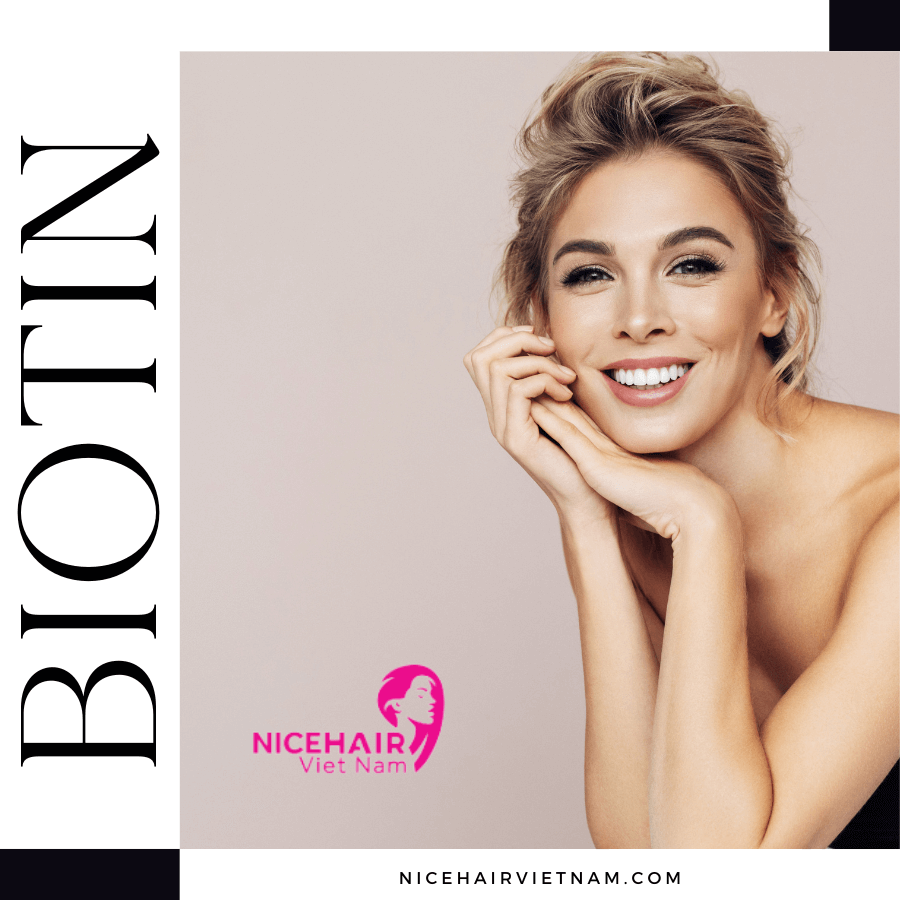
Let’s delve deeper into the rationale behind the notion that taking biotin may be deemed unnecessary and explore the scientific basis for this perspective.
According to the Institute of Medicine, a prominent national agency responsible for establishing daily nutrition requirements, the recommended daily intake of biotin for an individual stands at a modest 30 micrograms. Interestingly, they have not yet established a definitive safe upper limit for biotin consumption.
While it is true that many individuals, particularly those embracing their natural hair journey, have experimented with higher doses of biotin without experiencing significant adverse effects, there are numerous misconceptions surrounding this vitamin.
One crucial aspect to consider is that excessive amounts of biotin are not readily absorbed by the body, rendering any substantial increase in intake potentially futile. Being a water-soluble vitamin, any surplus biotin that surpasses the body’s absorption capacity will not be retained; instead, it will be naturally eliminated through the excretory system.
This leads us to a pivotal takeaway – exercise caution and seek professional medical advice before incorporating any dietary supplements into your routine, including biotin. While some individuals may have witnessed positive outcomes with biotin supplementation, it is essential to recognize that each person’s unique physiological makeup and health profile can vary significantly. A qualified healthcare professional can offer personalized guidance, taking into account individual factors such as medical history, existing nutrient levels, and potential interactions with other medications.
By approaching dietary supplement choices with prudence and expert guidance, we can prioritize our well-being and make informed decisions that positively impact our health and beauty aspirations. Remember, the journey to optimal hair health is multifaceted, and a holistic approach to nutrition, lifestyle, and hair care practices will pave the way for vibrant and thriving tresses.
How to Grow Natural Hair Past Its Terminal Length
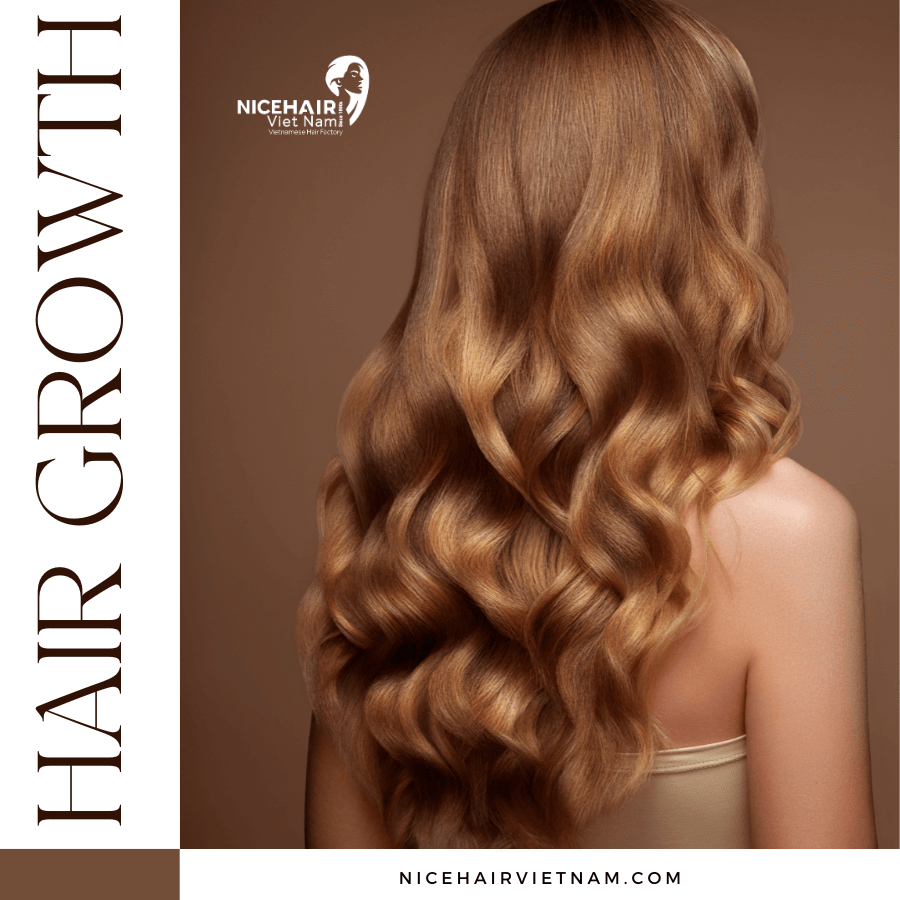
A prevalent concern among individuals seeking to understand the secrets of natural hair growth revolves around the concept of “terminal length”. This idea suggests that some people’s hair can only reach a certain length and won’t grow beyond that point.
However, it is essential to recognize that terminal length is not solely determined by genetics but rather by the diligent care we provide to our hair. As our hair lengthens, it becomes more susceptible to breakage unless we adopt essential practices like protective styling, minimizing exposure to extreme heat, and ensuring the right balance of protein and moisture for our hair’s health.
The idea of terminal length, therefore, can be better understood as a reflection of the impact of improper hair care, rather than a natural limitation on one’s ability to grow long, luscious hair. Embracing a thoughtful and meticulous hair care routine can lead to considerable growth potential, and in many cases, surpassing what might have initially seemed like a hair growth limit.
Nevertheless, it is crucial to acknowledge that the hair growth cycle inherently places some restrictions on our hair’s potential length. Each individual hair on our head goes through a growth period, followed by natural shedding, wherein it makes way for a new strand of hair. This process of hair loss is entirely normal and a fundamental aspect of the hair growth cycle.
In essence, understanding terminal length should encourage us to be proactive in providing the care and nourishment our hair requires to thrive. While certain limitations exist due to the natural growth cycle, there is immense potential for achieving healthy and beautiful hair through appropriate hair care practices and a holistic approach to overall hair health. By embracing the dynamics of hair growth and implementing tailored hair care strategies, we can unlock the full potential of our natural hair journey and celebrate the remarkable resilience and beauty of our locks.
Thankfully, the hair growth and shedding process operates on a staggered timeline, ensuring that each hair strand experiences these phases at different times. This means that the numerous strands of hair on your head are never all simultaneously in the process of falling out and being replaced at the same time.
Imagine the inconvenience and surprise if all your hair shed simultaneously! Such a scenario would lead to recurring periods of complete baldness throughout your life (not that there’s anything wrong with embracing baldness).
Generally, a typical hair undergoes a “life” cycle that spans between two to six years. As a result, one of the factors that may impede faster hair growth or hinder hair promotion is the stage at which your old or damaged hairs find themselves in the growth cycle.
To achieve your hair growth objectives, it might be necessary for your damaged hair to reach its telogen phase and naturally fall out. While this might seem counterintuitive, it paves the way for the emergence of healthy, new hair that can be nurtured and cared for properly, thereby promoting greater length retention.
By embracing a holistic approach to hair care, adopting protective measures, and diligently nourishing your hair with the right balance of nutrients and moisture, you can foster a conducive environment for healthy hair growth. As you pay attention to the unique needs of your hair and incorporate suitable practices into your routine, you will witness the rewarding results of achieving your hair growth goals and relishing in the beauty of thriving, radiant locks.
Undoubtedly, the journey to achieve your desired hair length requires patience (there’s that word again!), but it is an essential aspect of attaining your hair length goals. When it comes to growing long, luxurious hair, there is simply no substitute for consistent, diligent hair care over an extended period of time.
While the growth and resting phases of our hair are largely determined by genetics, most individuals can successfully reach a middle back length or even longer. It is rare to have a maximum hair-growing length of less than one foot, as our hair, much like our eyelashes or the hair follicles on our arms, is subject to natural limitations on how long it can grow.
Occasionally, people might point to dreadlocks as evidence of unlimited hair growth. However, it’s essential to understand that dreadlocks form when hair mats together, preventing it from splitting or falling out naturally. Therefore, they don’t necessarily represent the hair’s true growth potential.
Assuming all factors are optimized for hair growth, including favorable genetics and quality hair care practices, let’s explore a guide on the approximate time it might take to achieve specific hair length goals.
Armed with the knowledge that the average hair growth rate is about 1/2 inch per month, if you find that you are retaining significantly less than this average, it could be an opportunity to reevaluate and fine-tune your hair care regimen to better cater to the needs of your hair.
Maintaining a natural hair journal can prove immensely helpful, enabling you to swiftly learn more about your hair’s unique characteristics, wants, and needs. Documenting your hair care practices, product choices, and any noticeable changes will provide valuable insights that can inform adjustments for optimized hair growth.
Whether your hair goals involve reaching armpit length, bra strap length, or any other length, the key to expedited progress lies in consistently practicing excellent hair care. By adopting a comprehensive approach to hair care, including proper cleansing, moisturizing, protective styling, and minimizing damaging practices like excessive heat or chemical treatments, you can pave the way for healthy and beautiful hair growth.
Remember, the journey to long, luscious locks is not only about the destination but also about cherishing the process of nurturing and caring for your hair. Embrace the adventure with determination and a commitment to giving your hair the love and care it deserves, and your hair goals will be well within reach.
Does a Healthy Diet Help Hair Growth?
What is Healthy Diet? The term “healthy diet” refers to a well-balanced eating pattern that provides essential nutrients, promotes overall health, and reduces the risk of chronic diseases. A healthy diet should include a variety of foods from different food groups to ensure that the body receives all the necessary nutrients it needs to function optimally.
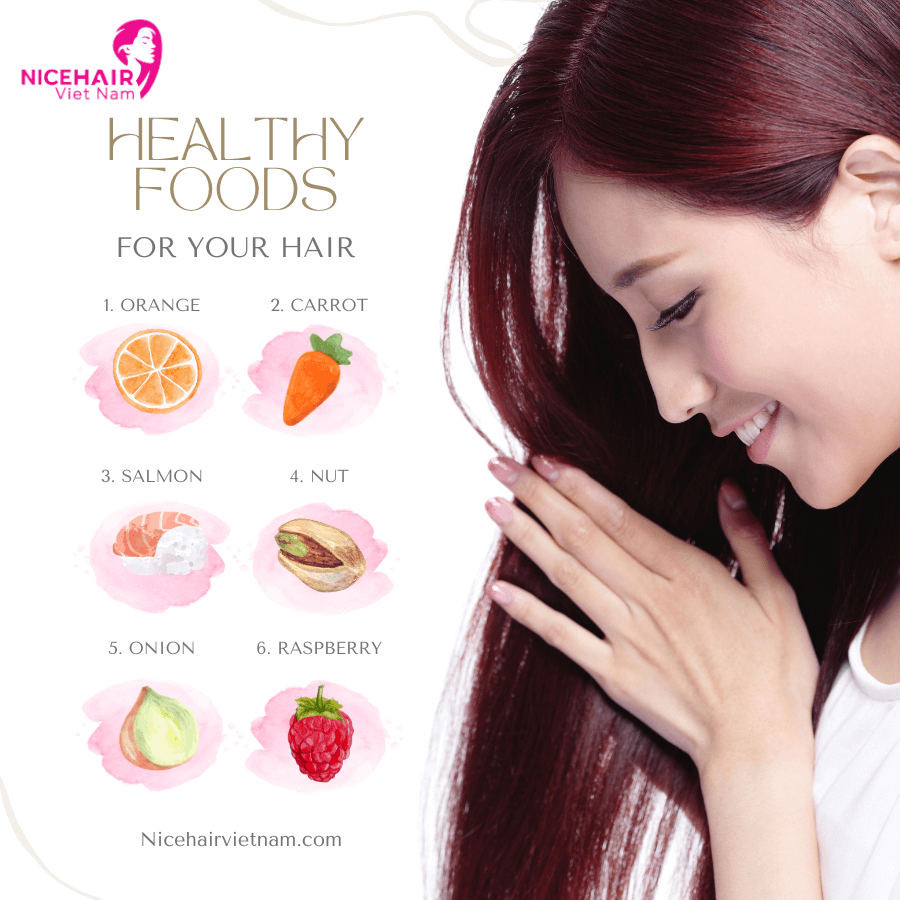
The health of your hair, just like the rest of your body, is intrinsically linked to your overall well-being. The presence of essential nutrients in your body plays a crucial role in determining the speed and quality of your hair growth.
Among the vital elements for hair health, protein takes center stage, as hair heavily relies on it for strength and vitality. Ensuring an adequate intake of protein-rich foods is key. Consider incorporating sources such as steak, fish, chicken, eggs, tofu, legumes, and beans into your diet to nourish your hair from within.
Equally important are fruits and vegetables, which contain an array of nutrients that actively promote hair growth. By embracing a diet rich in these plant-based foods, you provide your hair with the nourishment it needs to flourish.
Certain vitamins have gained prominence for their potential benefits in supporting hair health and growth. Vitamin A, vitamin C, niacin, and biotin are among the nutrients frequently associated with healthier hair and enhanced growth potential. For those considering supplementation, a multivitamin containing these essential vitamins could be a suitable approach (after consulting with a healthcare professional, of course). As with any supplement, it’s crucial to seek medical advice to ensure compatibility with your specific health needs.
Regarding biotin, it’s worth noting that scientific data does not overwhelmingly support claims of its direct influence on hair growth. Nevertheless, it is crucial to recognize that biotin deficiencies are exceedingly rare, as it is naturally present in numerous foods and produced by the gut microbiome.
The likelihood of your body lacking the necessary amount of biotin is remarkably slim, as intestinal bacteria naturally produce an excess of biotin, surpassing the body’s daily requirements. For more comprehensive insights into why we advise against biotin supplements, I encourage you to read this informative article: “Does Taking Biotin For Hair Growth Really Work?”
In addition to maintaining a nutritious diet, it is crucial to avoid activities or habits that can counteract the positive effects of healthy eating. Smoking, excessive alcohol consumption, and other unhealthy practices should be minimized or eliminated to fully reap the benefits of a balanced diet.
Establishing a healthy and well-rounded eating plan is generally considered best practice. Planning your meals for a week in advance allows you to ensure you have the right ingredients on hand to prepare wholesome and nourishing dishes.
Before making any changes to your diet or supplement intake, it is essential to consult with your doctor to ensure compatibility with your individual health needs. If deemed necessary, incorporating an over-the-counter multivitamin into your daily routine can serve as a beneficial complement to your diet.
However, I must stress that taking biotin should be avoided unless specifically recommended by a qualified medical professional. Otherwise, it could potentially be a needless expenditure, considering the abundance of biotin produced by the body’s natural processes. Prioritizing evidence-based approaches to hair and overall health is key, ensuring you make informed decisions that contribute to your well-being without unnecessary expenses or potential risks.
Here are 8 food types that I recommend incorporating into your diet
- Looking to save on your gas expenses and boost your protein intake? Look no further than beans! Perhaps the gas comment was a bit unnecessary, but you catch the drift. Beans are a fantastic source of protein, packed with numerous other essential nutrients.
- How about adding some vibrant asparagus and nutrient-rich spinach to your plate? Don’t forget the delightful crunch of broccoli! Incorporating these dark green veggies into your diet brings a wealth of vitamins and minerals to nourish your body.
- Nuts may be beloved by squirrels and even psychiatrists, but they’re more than just a whimsical treat. For instance, brazil nuts can benefit your scalp, while various nuts are excellent sources of zinc and other essential nutrients. Experts, like those from Columbia University Health Services, highlight that adequate zinc intake can help reduce excessive hair shedding. Keep in mind that zinc can also be found in other foods like meats and cheese.
- Eggs, anyone? Whether you fancy a delectable frittata or a light and fluffy scrambled egg without cheese, eggs provide a fantastic source of protein for your diet. They are a constant and beloved staple in my meal plan and can be prepared in countless delicious ways.
- Looking to nourish your scalp and promote its health? Seek out foods rich in Vitamin A, like raw carrots – a tasty and beneficial choice.
- Incorporating yogurt, milk, and other dairy options into your diet offers an array of benefits. These dairy delights provide valuable sources of calcium, protein, and various essential nutrients. If cottage cheese isn’t your cup of tea, no worries – there are plenty of other delightful options to explore.
- Elevate your diet with the goodness of whole grains, which boast a wealth of zinc, iron, and B vitamins. Consider adding a variety of whole-grain foods to your meals, such as whole-grain bread, cereal, and rice, for a wholesome and nourishing experience.
- For high-quality protein and a host of other essential nutrients, turn to the likes of chicken, turkey, lean beef, and salmon. These protein powerhouses are excellent choices to support your overall health and well-being.
Here’s a bonus tip to keep in mind: While drinking water may not directly stimulate hair growth, maintaining proper hydration is a crucial factor in retaining hair length. Our bodies consist of various areas that primarily comprise water. When dehydration occurs, the vital organs and systems that require water for survival will receive priority in water distribution.
As you might have guessed, hair doesn’t rank at the top of that priority list. Therefore, it’s essential to ensure your hair receives sufficient hydration – both internally and externally. Staying well-hydrated not only supports overall health but also contributes to the vitality and health of your hair. So, drink up and keep your hair nourished and happy!
Scalp Care, Protective Styling & Trimming
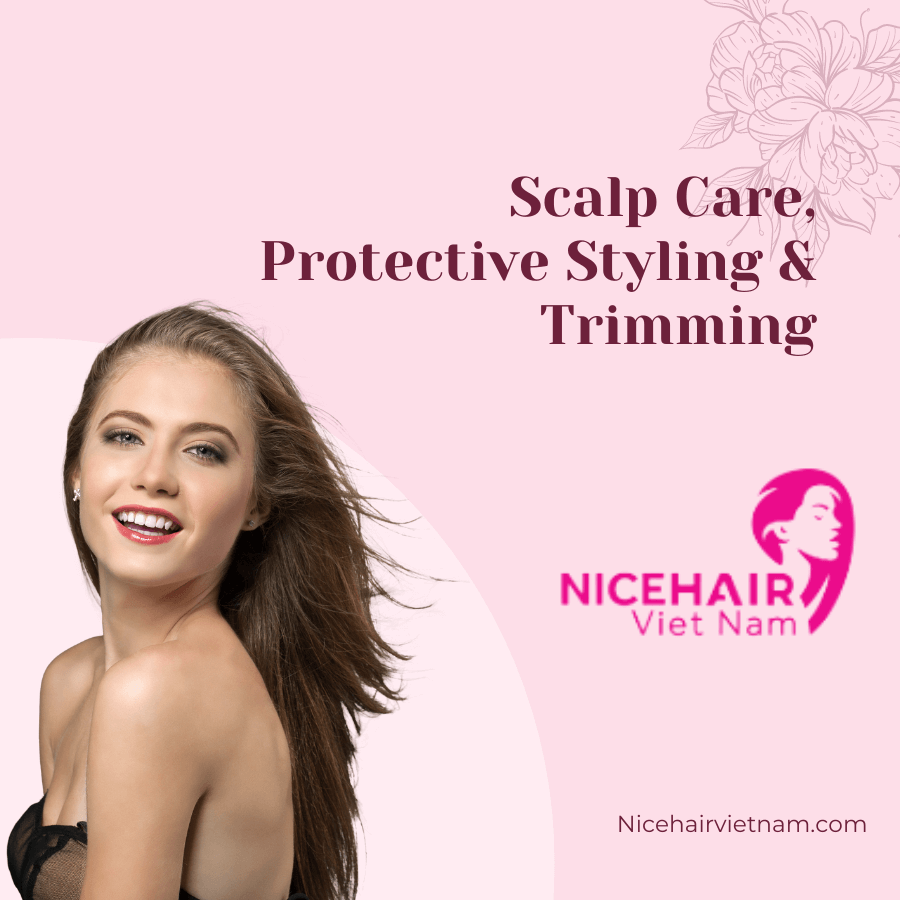
It all starts with a healthy scalp – the very foundation from which your hair sprouts. Taking care of your scalp is paramount to fostering healthy hair growth, as it is the region where your hair is rooted and nourished.
To accelerate hair growth, promoting good blood circulation in the scalp is a key factor, and this can be achieved through regular scalp massages. Don’t worry; it need not be time-consuming. Simply use your fingers to massage your scalp in gentle circular motions for about five minutes daily.
For an added boost, consider using natural oils like coconut oil, rosemary oil, argan oil, mineral oil, or olive oil during your scalp massage. These oils offer valuable nourishment to your scalp and hair. If you’re curious about other hair oils that can contribute to increased hair thickness, take a moment to explore this informative article on essential oils.
In addition to scalp massages and oil treatments, maintaining a healthy scalp involves avoiding product build-up and using gentle hair care products. Harsh chemicals can adversely affect your scalp and hair, hindering growth potential. Protecting your scalp from extreme heat is also crucial, as excessive heat styling can lead to damage and weaken the hair shaft.
A well-rounded approach to scalp care is incomplete without paying attention to your diet. Consuming a balanced and nutritious diet provides the essential vitamins and minerals your scalp needs to support healthy hair growth.
Remember, a healthy scalp is the cornerstone of vibrant and robust hair. By incorporating scalp massages, nourishing oils, gentle products, and a balanced diet into your hair care routine, you’ll pave the way for luscious locks and a flourishing scalp.
View more: Scalp Exfoliation Unleashed: Reveal Your Hair’s Full Potential
Does Protective Styling Grow Hair?
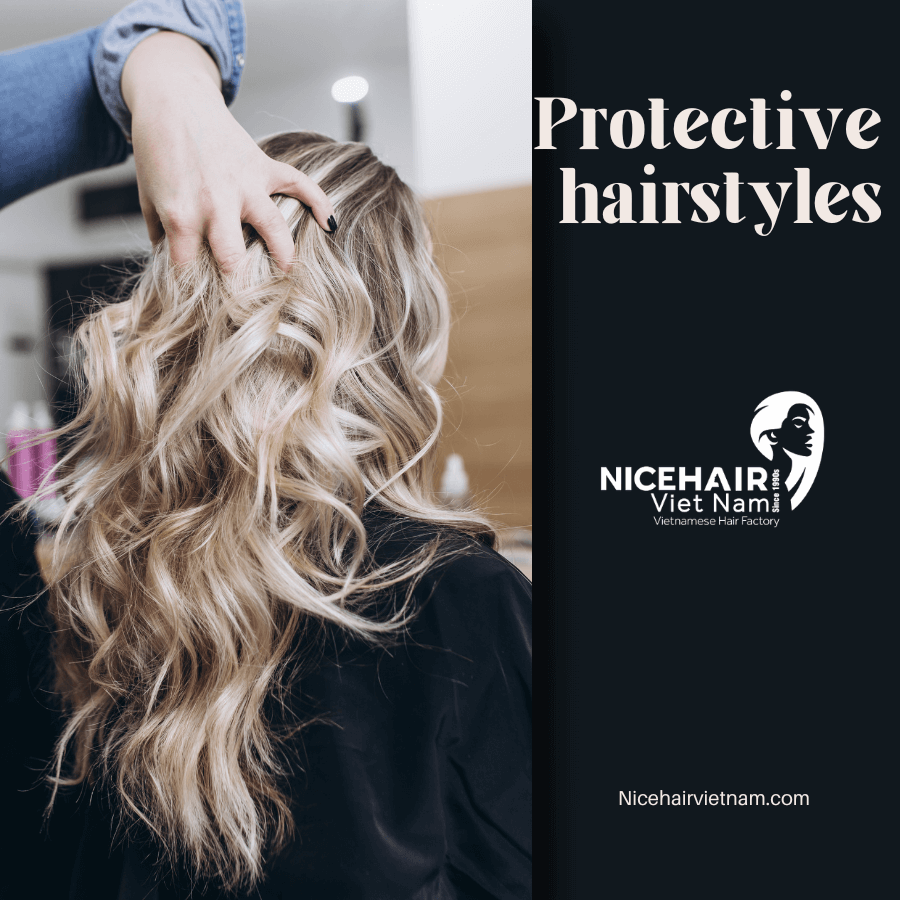
Protective styling holds immense importance, but when I mention it, I’m not solely referring to protective hairstyles, which have their own distinct characteristics.
While sporting updos and French rolls can certainly be beneficial, they’re not precisely what I have in mind. The essence of protective styling lies in consistently adopting practices that shield your hair from damage.
It centers on the process you employ to style your hair rather than the specific style you choose to wear. For instance, if you plan to apply heat to your hair, taking precautionary measures to minimize the risk of heat damage is essential.
Using a heat protectant is a helpful step, but truly safeguarding your hair from heat damage requires additional considerations. Being mindful of factors like heat setting, duration, and frequency of heat usage can make a significant difference.
As you may have heard this sentiment before, it is genuinely about amplifying the positive aspects of your hair care routine while eliminating detrimental practices.
Incorporating more beneficial habits and reducing harmful practices in your hair care regimen ultimately shapes the foundation of protective styling. By nurturing your hair with thoughtful and mindful care, you foster an environment conducive to healthy hair growth and overall well-being. Remember, the path to flourishing tresses is paved with the cumulative impact of the positive choices you make for your hair’s health and beauty.
The ends of your hair represent the oldest sections, making it crucial to prioritize their preservation if you aspire to achieve long, flowing locks. This emphasizes the fundamental concept of length retention as a primary key to attaining long hair.
To foster hair growth success, it is essential to handle your hair with tender care. Mishandling can lead to increased fragility, making your hair more susceptible to breakage and hinder your progress in growing long hair. Frequent handling can weaken the hair strands over time, highlighting the importance of adopting low manipulation styles, such as protective hairstyles, as well as practicing protective hair care.
Embracing low manipulation styles and protective hair care techniques aids in minimizing unnecessary stress on your hair, reducing the risk of damage, and optimizing the potential for length retention. By being gentle and mindful in your hair care routine, you create a nurturing environment that supports the health and length of your precious tresses.
Remember, the journey to long, beautiful hair is not just about growth but also about preserving and cherishing every inch of progress along the way. By prioritizing length retention through caring practices, you set yourself on the path to achieving your hair length goals with grace and vitality.
Does Trimming Hair Make It Grow Faster?
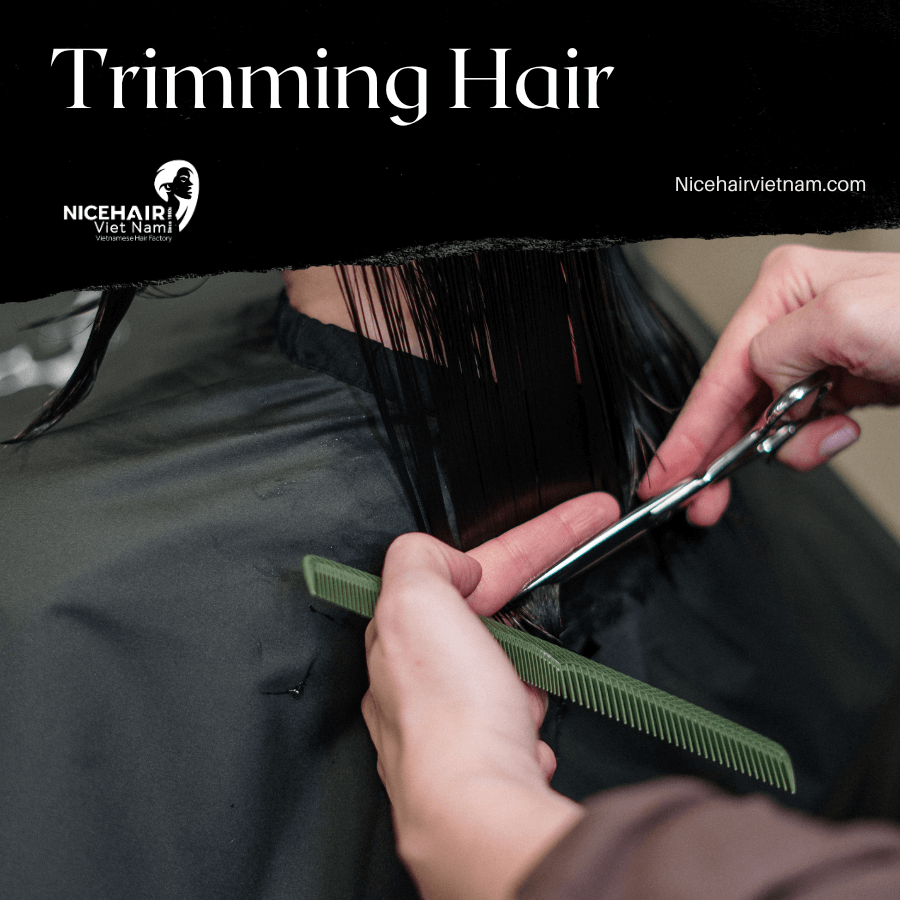
Trimming your hair does not accelerate its growth; it simply shortens its length. It’s best to trim your hair only when necessary, avoiding fixed monthly or specific intervals for trimming, as this advice is often ill-advised.
Considering the average hair growth rate of approximately 1/2 inch per month, frequent monthly trims may result in cutting off a significant portion of your new growth, impeding your progress in achieving longer hair.
Instead, I recommend keeping a watchful eye for split ends and carefully trimming them as needed. Addressing split ends promptly helps safeguard your hair growth aspirations by preventing these damaged ends from causing further problems.
When opting to trim your hair, it’s safer to do so when it’s dry. Trimming dry hair is less likely to cause damage to the hair strands, which is a key consideration for maintaining hair health.
By adopting a prudent and mindful approach to trimming, focusing on the health and needs of your hair, you ensure that your hair retains its vitality and continues to flourish towards your hair growth goals.
Tips To Brush Your Hair To Help Retain Length
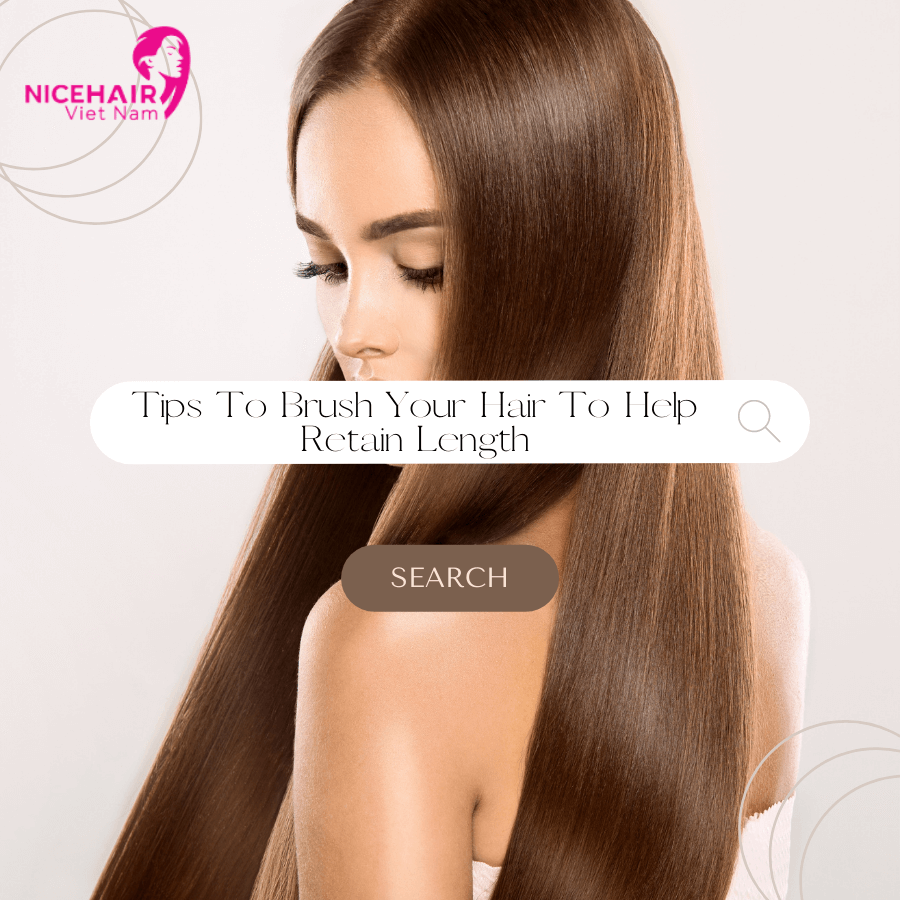
When selecting hairstyles, consider opting for those that require minimal manipulation or combing, commonly known as protective hairstyles. However, it’s essential to be mindful that certain hairstyles may necessitate more frequent combing.
Remember, improper combing can lead to significant damage to your hair. To preserve the health of your hair, avoid excessive combing or brushing, and ensure that your combs are kept clean.
Dirty combs can harbor dirt, chemicals, and hair oils, which may contribute to hair damage over time. When combing, opt for wide-toothed combs that gently glide through your hair without yanking or pulling out strands. Be gentle and considerate of your hair’s well-being during the combing process.
Here’s a little-known gem: finger combing. Though not necessarily a “secret” technique, finger combing proves effective for many women with natural hair. This gentle method allows you to manage and retain length while minimizing potential damage.
By being attentive to your combing practices, embracing finger combing when appropriate, and selecting hairstyles that promote minimal manipulation, you nurture your hair with the care it deserves, fostering healthy and thriving locks.
Hair Growth Timeline for Females
One of the most commonly asked questions about hair growth revolves around how long it will take to achieve desired hair length. However, it’s a challenging question to answer definitively, as numerous factors come into play when determining the timeline for hair growth.
The primary aim of this discussion is to guide you in creating a natural hair routine that fosters hair growth.
As you delve into the information provided, it’s essential to keep in mind that the time estimates for achieving specific hair lengths are just that – estimates. Every individual’s hair growth journey is unique, and no one can predict precisely how long it will take for your hair to reach a certain length. It remains an elusive question.
Genetics is one of the critical factors that influence hair length goals, shaping each person’s hair growth rate and potential.
Growing your hair to substantial lengths will require consistent, dedicated care over an extended period. While many aspire to have long hair, it’s crucial to recognize that achieving this goal demands significant time investment.
Amidst the plethora of magical hair potions, creams, growth supplements, and lofty promises of rapid results, it’s easy for individuals to become disheartened. However, it’s essential to remain cautious and realistic about such claims and instead embrace the timeless virtue of patience.
In the journey to grow your hair, patience is the tried and tested method. Time, steadfast commitment, and nurturing care form the foundation for successful hair growth. Remember, there are no shortcuts to long, healthy locks – only the steady passage of time and your diligent care can yield the desired results.
The Typical Hair Growing Experience
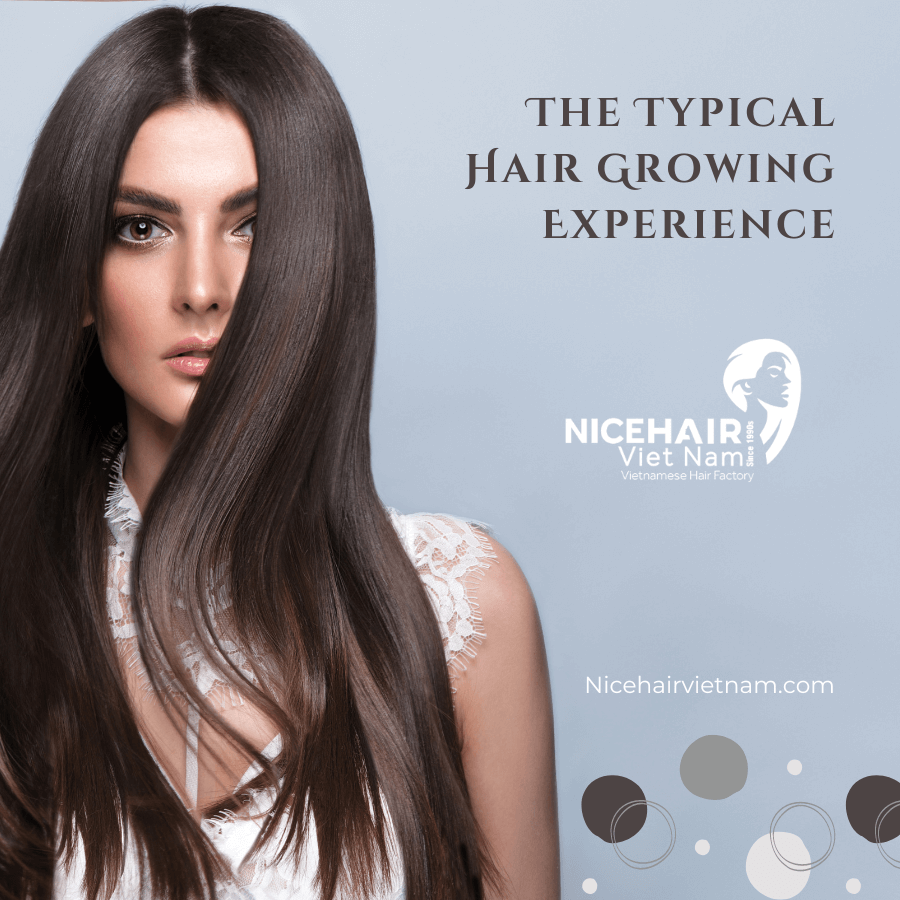
During the initial three to four months of your hair growth journey, you will likely observe changes in the texture, thickness, and overall appearance of your hair. These improvements in thickness are often noticeable even before any significant increase in hair length becomes apparent.
Around six to eight months into your hair growth journey, provided you have been diligently caring for your hair, you can expect to see a visible difference in length.
Here is a general timetable of hair growth rates for reference, though it’s crucial to bear in mind that individual hair growth rates can vary widely, making this timeline a rough estimate rather than an exact prediction. Each person’s hair growth journey is unique, and your personal growth rate may significantly deviate from this timeline.
Despite some hesitancy in posting this general timeline, it may prove useful for some individuals seeking insights into hair growth expectations. Remember that patience and consistent care remain the key factors in achieving your hair growth goals, regardless of how your journey aligns with any timeline.
How Long Will It Take to Grow My Hair Out?
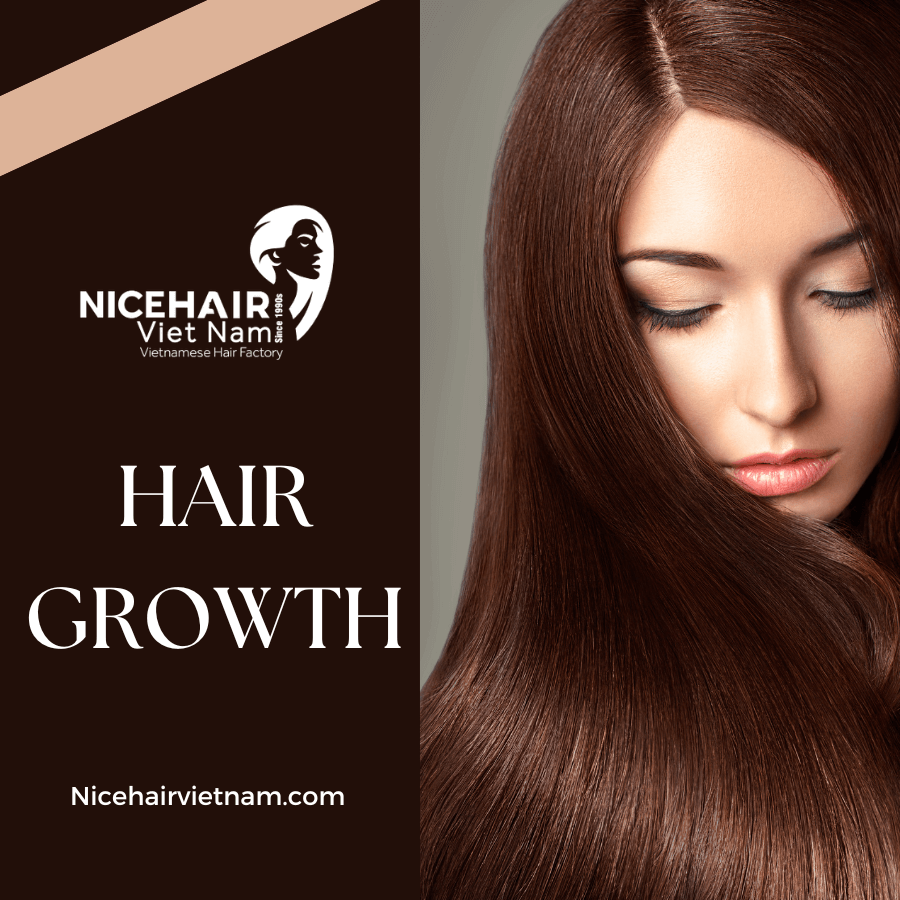
Shoulder Length
Starting with a completely shaven head provides a fresh canvas for your hair growth journey. By diligently adhering to a proper natural hair regimen that nourishes and supports healthy hair growth, you can set your sights on achieving the remarkable milestone of shoulder-length hair. This transformative process typically spans a duration of approximately 2 to 2 1/2 years, during which you’ll witness the gradual evolution of your hair’s length and texture.
Patience and consistency will be your allies throughout this endeavor. The key to successful hair growth lies in providing your tresses with the tender care they deserve. This involves adopting a nourishing hair care routine that includes regular cleansing, conditioning, and moisturizing, while avoiding harmful practices like excessive heat styling or harsh chemical treatments that could hinder your hair’s progress.
As you embark on this exciting journey towards shoulder-length hair, embrace the joy of discovering the diverse hairstyles you can create along the way. Emphasizing hair health and adopting protective styles will help safeguard your locks from potential damage, ensuring that you retain the length you’ve worked so diligently to achieve.
Armpit Length
Between shoulder length and bra strap length, there exists another frequently achieved hair length milestone referred to as Arm Pit Length (APL).
Arm Pit Length is determined by drawing an imaginary line across your back from one armpit to the other, where your arm meets your back.
Growing your hair from shoulder length to armpit length may vary in duration, taking approximately 6 to 15 months, depending on factors such as hair retention and trim frequency.
Bra Strap Length
After successfully reaching the Arm Pit Length (APL), the journey towards the bra strap length (BSL) usually spans around 9 to 18 months.
The bra strap length, being a notable milestone, is defined by the position on your back where the bottom strap of your bra comfortably rests. Achieving this length is a significant accomplishment in the realm of hair growth.
As you embark on this endeavor, it’s essential to be aware that attaining the coveted bra strap length generally requires a patient commitment of approximately 3 years from the initial starting point of a clean shave. Embracing a steady and dedicated hair care regimen will be instrumental in reaching this hair length milestone successfully.
Waist/Mid Back
Commencing with a TWA (Teeny Weeny Afro) haircut, it will take approximately 3 to 4 years, or possibly even more, of diligent hair care to achieve mid-back length, which is the significant point between your waist and bra strap length.
Once you reach mid-back length, it’s likely to take an additional 6 months to 1 year to progress to waist length, considering the regular trims you might have undertaken along the way and the length of your back.
It’s important to remember that this schedule serves as a general guideline if you’re aiming to grow your hair from a short TWA haircut or starting from a completely bald head.
However, please keep in mind that these timeframes are estimates and should be treated as a general timeline. The rate of hair growth can vary significantly depending on individual factors. If your hair grows notably slower than the average rate or if you are taller, these estimates may differ significantly from those of someone who is shorter but experiences a faster rate of hair growth. Patience and consistent hair care practices are key to achieving your desired hair length.
Final Thoughts On How to Promote Hair Growth
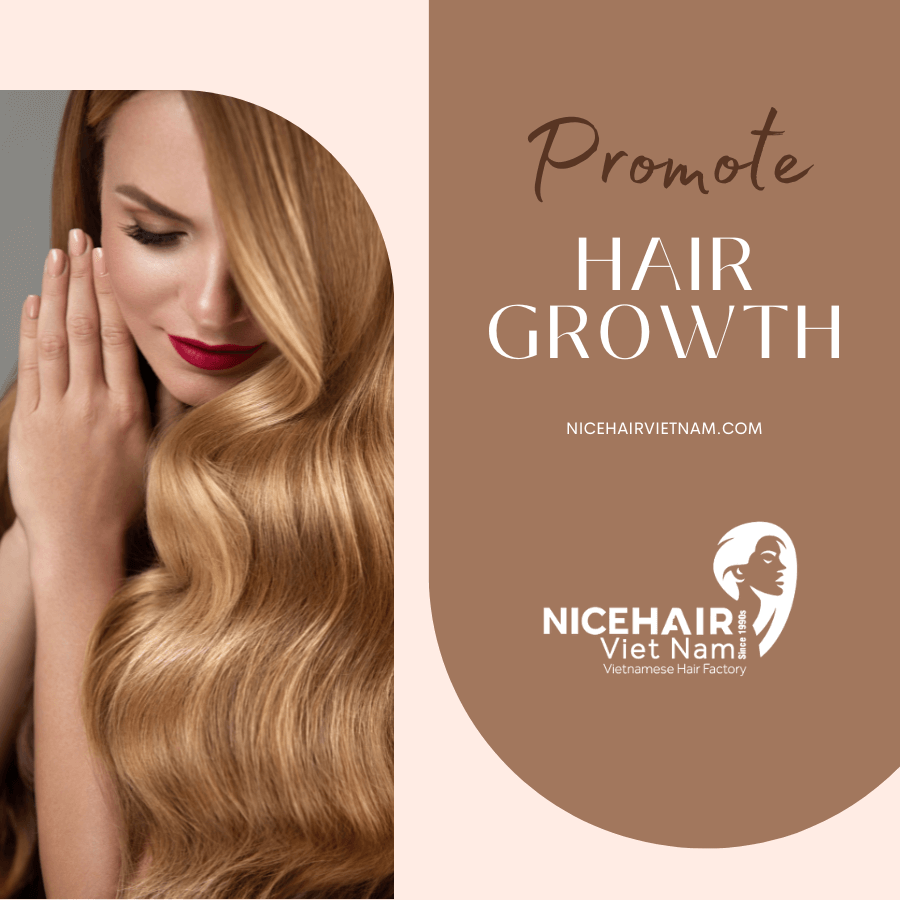
The health of your hair (hair health) is closely linked to your overall well-being. However, certain medications used to treat various illnesses can influence the appearance and growth of your hair, potentially leading to hair thinning and loss, known as alopecia. The list of medications that can negatively impact your hair is extensive.
If you suspect that the medications you are taking might be affecting your hair growth, it’s essential to have a conversation with your doctor about your desire to maximize hair growth and whether any of your current prescriptions could be influencing the rate at which your hair grows.
In some cases, your doctor may suggest alternative medications that won’t have a detrimental effect on your hair growth rate. Furthermore, it’s crucial to emphasize that how well you take care of your hair plays a significant role in its growth and length retention.
Maintaining overall health by adopting a balanced diet is important. Avoid subjecting your hair to damaging exotic treatments or harsh hair care products. Additionally, limit exposure to extreme heat and potentially harmful chemicals or elements that could harm your hair’s health and growth. By prioritizing proper hair care, you can promote healthy hair growth and overall well-being.
Be mindful when combing your hair and take into consideration the potential effects of medications on hair growth. If you have any inquiries or concerns about natural hair growth, feel free to ask your questions in the comment section after reading this article.

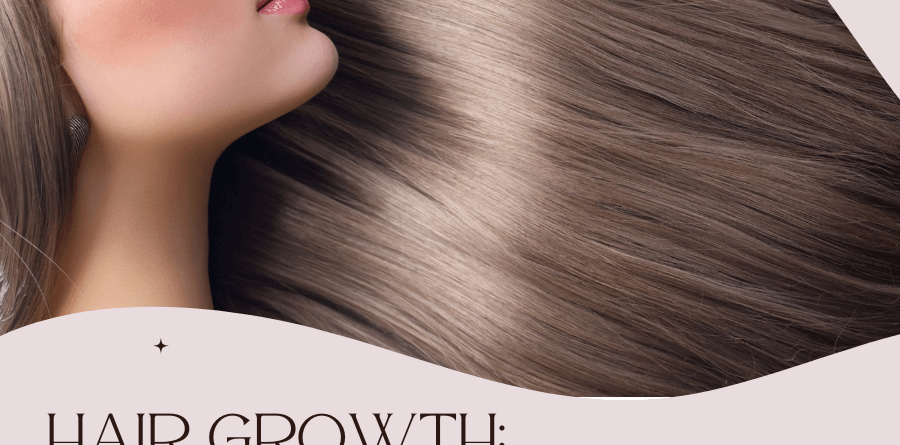
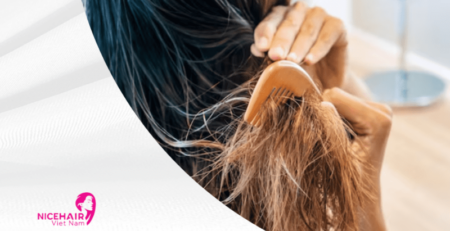

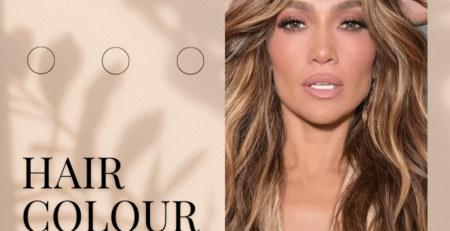

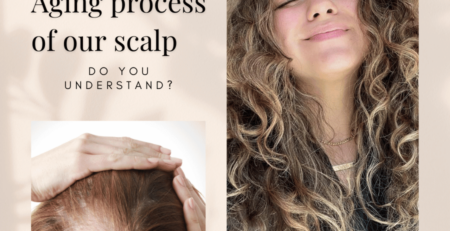
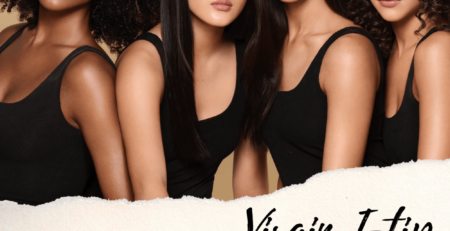


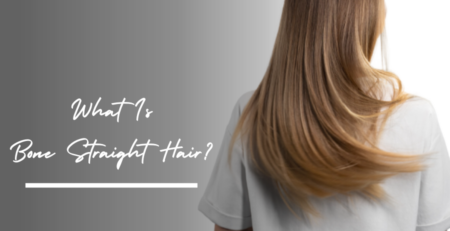
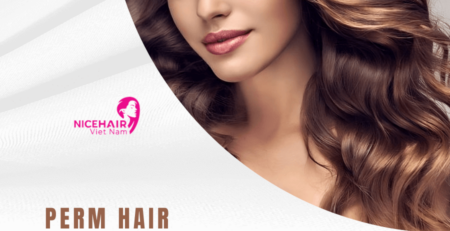
Leave a Reply